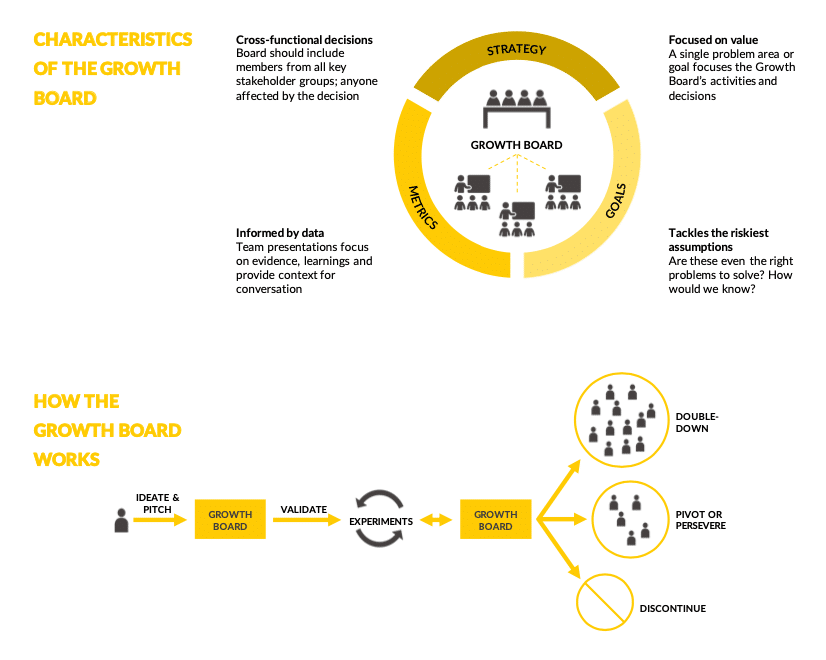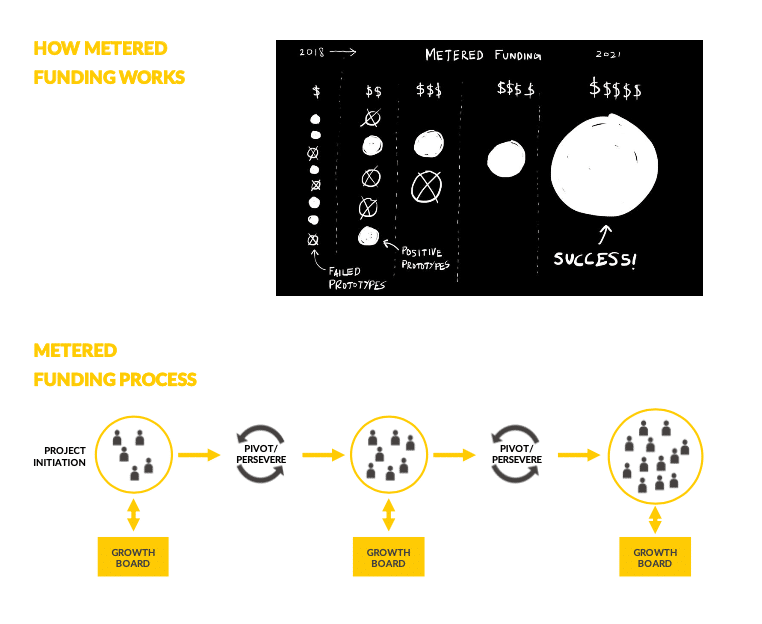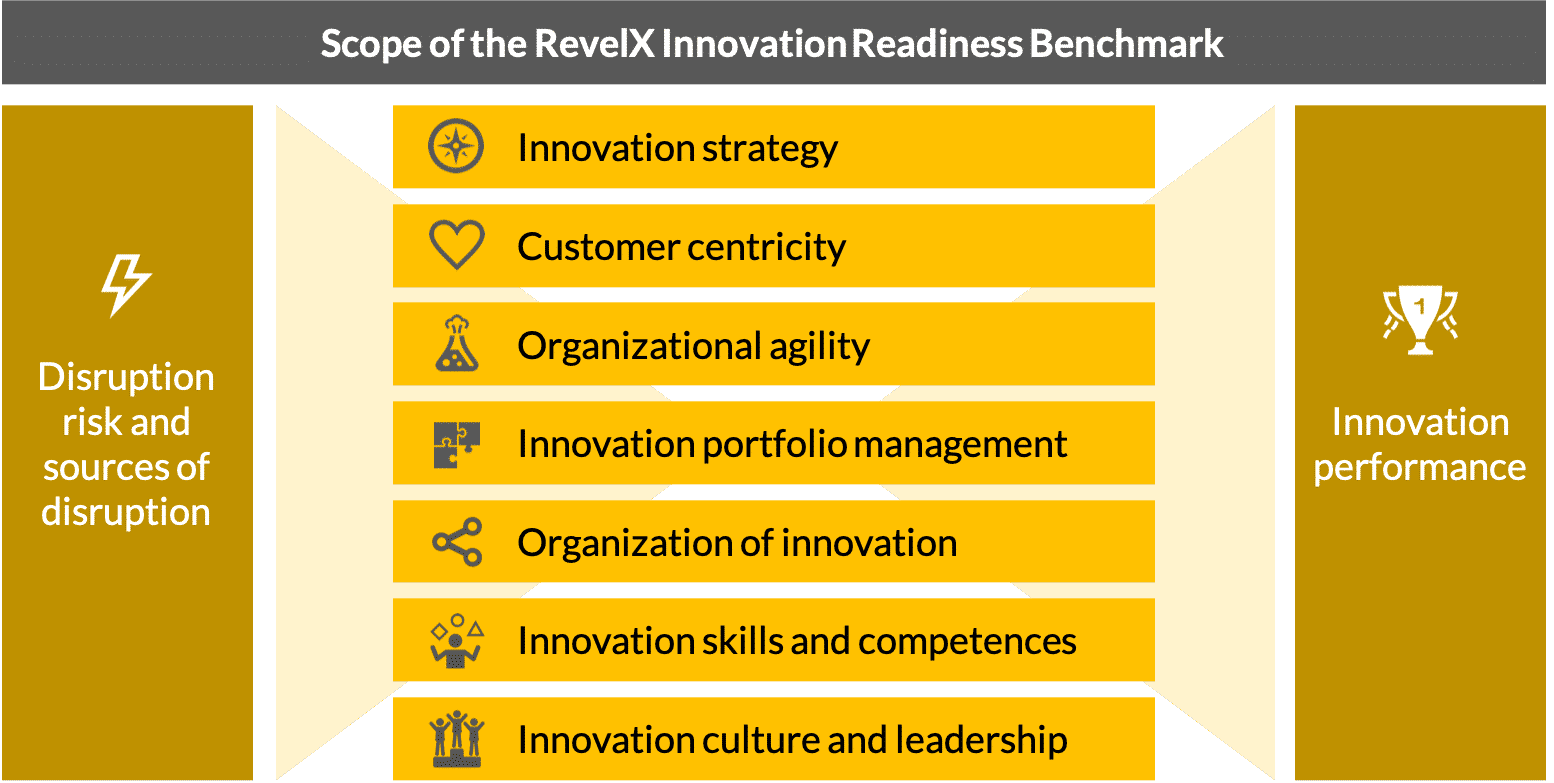Discovering and exploiting opportunities for growth. That is our playing field. We excel at disruptive creativity, rigorous analysis and disciplined execution. We add strategic thinking and execution power to your team. That is how we realize growth for corporates (or any established business).
We are a team of growth entrepreneurs. A collection of curious minds and diverse personalities. Based in Amsterdam, we are proud to serve our clients around the globe with a team of highly skilled and passionate professionals.
We are proud to partner with our clients.
Why we made this
(Corporate) Innovation is hard. Especially given the amount of uncertainty we face today. We created this playbook to help you succeed as an (corporate) innovator. By providing you with a set of proven methods, frameworks and tools you can deploy within your organization today. Let’s grow!
What we will cover
We will introduce you to (corporate) innovation and why it’s hard, explore the 4 key corporate innovation methods and dive into the 3 main (corporate) innovation challenges and how to overcome them. As a bonus, we have 2 free resources lined up for you.
How you can read it
The playbook is structured around several key (corporate innovation challenges. You don’t have to read it from start to end, as you can jump straight to those topics which have your interest. But hey, if you wish to cover everything, you’re more than welcome to read it like a book.
(Corporate) Innovation and why it's hard
What do we mean when we talk about innovation?
INNOVATION: The process & activities to transform ideas and hypotheses into solutions that add value from customer, business and societal perspective
Why should you innovate in the first place?
In many organizations, the need for innovation is not so apparent. The mantra of ‘we have done it this way for the past decades, why change?’ is still heard in many organizations. The opportunity presented by adopting an innovation mindset is lost on them. We urge organizations to have an innovation strategy which lays out what innovation means for them and how it is crucial for long term survival. Research suggests that companies who do well at innovation generate 3 times more revenue growth.
There are three main reasons why innovation is important:
- Relevance for customers
Customer needs are changing all the time. This holds true in a consumer context as well as in a business-to- business context. Our job is stay relevant for our customers. This requires a process of constant adaptation. Continuous innovation is key in that. - Building business resilience
We are living in challenging times. Crises are following each other in rapid succession. COVID-19 is proving to be the greatest disruptor of our time. We must build resilient business models to keep our businesses afloat amid this turmoil. Business model innovation is a key competence. - Fend off industry disruptors
Disruptors are around every corner. You might not be aware of them yet. As businesses mature and markets develop, incumbent organizations tend to be focused on extending current offerings for current customers. Make it a habit of building your own disruptor frequently to prevent getting caught by an external one.
How to incorporate innovation: The Corporate Innovation Matrix

Adapted from Pedram Mokrian (New Line Ventures and The Stanford School of Engineering)
How to govern innovation: appoint a Growth Board
To innovate by applying startup principles, make decisions like VCs do. Start with a Growth Board. Key characteristics of a Growth Board:
- cross-functional team focused on delivering business value
- reflects appropriate business owners and (top) management
- has budget and resource mandate
- uses data to make ‘pivot-or-persevere’ decisions
- enables and encourages top-down and bottom-up collaboration
- is not a siloed management team focused on status updates
- does not act like traditional top-down, command-and-control decision makers
- acts like an internal Venture Capitalist

How to fund innovation: Metered Initiative Funding
Traditional funding:
- Teams and projects are funded through an infrequent (usually annual) budgeting process
- Typically, a central decision-making team makes an allocation for a set period
Metered funding:
- Works like a startup’s funding process: allocating funding over a series of rounds
- Funding is based on goals and milestones
- In the early stages, funding is learning based, and in the latter stages, funding is growth based

Innovation is hard: insights from the Innovation Readiness Benchmark
The RevelX Innovation Readiness Benchmark indicates what it takes to be a best-in-class innovator
- 7 key innovation areas
- 35 best practices
- 7 drivers for disruption
- 5 performance KPI’s
- 250+ participants (and counting)
Only 25% of companies rate their own innovation performance as ‘good’
RevelX research among over 250 companies from various sizes and industries shows that only 25% of companies are satisfied with their own innovation performance, although 65% of companies are afraid of being disrupted . Only 47% of companies have a well-defined innovation strategy and roadmap in place.
estimates the disruption risk as 7 or higher (on a scale from 1-10)
Rates their own innovation performance as ‘good’
indicates they do not have a well-defined innovation strategy and roadmap in place
Our research has uncovered 7 key building blocks of best-in-class innovation performance, and a large variety of underlying organizational aspects driving innovation.

Why corporate innovation fails
Between 70-90% of innovation projects fail*. But why? Based on our experience and research** we identified 5 key reasons why innovation fails within the corporate environment:
- Innovation theater
Many organizations play ‘innovation theater’: they don’t walk the talk on true innovation practices. They perform innovation activities but don’t make them part of their strategy or core process of continuous innovation. - Strategy disconnect
Innovation programs should be part of the overall organizational strategy. They should be tied into all strategic horizons: short, medium and long term. Disconnected innovation will not deliver (long term) value. - “Not invented here” syndrome
Siloed organizations suffer from the ‘not invented here’ syndrome. Successful innovation is based on cross-functional collaboration. This requires an open attitudes towards other business units and external opportunities - Low risk appetite & failure acceptance
Innovation is often seen as synonymous with high risk. Industries with low-risk appetite and failure acceptance miss out on the opportunity. Innovation done right de-risks the process and learns from failure. - Lack of data culture
Smart decision making is a key aspect of successful innovation. Too often decision making is only based on gut feel or opinions. Smart decision making is based on data and insights. A data culture is a prerequisite for value.
* Beth Altringer, Harvard Business Review research, https://hbr.org/2013/11/a-new-model-for-innovation-in-big-companies
** RevelX – Innovation Readiness Benchmark insights, 2020
This is the first in a series of blogs on the RevelX Innovation Playbook where we demystify innovation and its challenges. It contains methods, tools, canvases and definitions any innovator needs to succeed.
Matthijs Rosman
Trusted and creative advisor. Specialist in growth acceleration and innovation. Combines analysis and creativity to develop surprising combinations. From new digital possibilities to ways to improve commercial results. Cordial towards others, sharp on details. Continuously looking for growth opportunities.
Related posts
Future-proofing the Legal Industry: How Innovation Management is reshaping Law Firms
Explore how lawyers can transform their business…
March 28, 2025
Navigating tomorrow: empowering companies through Futures Thinking for strategic success
Leveraging Futures Thinking to uncover opportunities,…
March 28, 2025
The power of AI enhanced innovation software
Unique integration of RevelX’ best practices embedded in…
March 12, 2025




